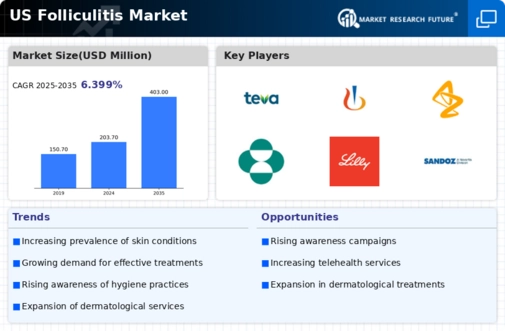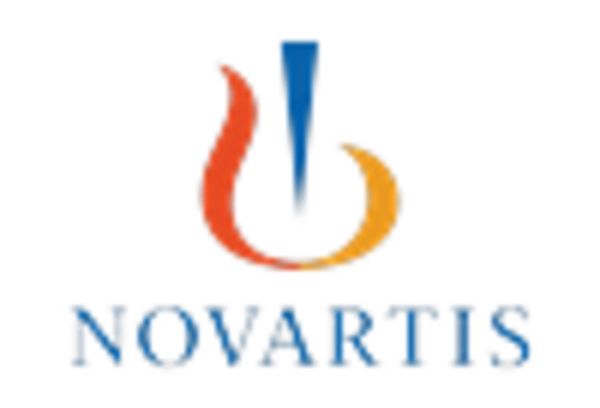Increasing Incidence of Folliculitis
The rising incidence of folliculitis in the US appears to be a primary driver for the folliculitis market. Factors such as increased skin irritation from shaving, friction from clothing, and bacterial infections contribute to this trend. Recent data indicates that folliculitis cases have surged by approximately 15% over the past five years, highlighting a growing concern among consumers. This increase in cases necessitates a corresponding rise in treatment options, thereby expanding the market. As awareness of skin health continues to grow, individuals are more likely to seek medical advice and treatment for folliculitis, further propelling the market forward. The folliculitis market is thus positioned to benefit from this upward trend in incidence, as healthcare providers and consumers alike prioritize effective solutions.
Rising Focus on Preventive Healthcare
The rising focus on preventive healthcare is emerging as a significant driver for the folliculitis market. As consumers become more health-conscious, there is a growing emphasis on preventing skin conditions before they arise. This shift is reflected in the increasing sales of preventive skincare products, which have seen a growth rate of approximately 25% in recent years. Educational campaigns aimed at promoting skin health and hygiene are also contributing to this trend, encouraging individuals to adopt preventive measures against folliculitis. The folliculitis market is likely to benefit from this proactive approach, as consumers seek products that not only treat existing conditions but also prevent future occurrences. This focus on prevention is reshaping the landscape of the market.
Advancements in Dermatological Research
Ongoing advancements in dermatological research are likely to significantly impact the folliculitis market. Innovations in treatment methodologies, including the development of targeted therapies and improved topical agents, are emerging as key factors driving market growth. Research indicates that the efficacy of new treatments has improved by over 20% compared to traditional methods, leading to higher patient satisfaction and adherence. Furthermore, the exploration of genetic factors influencing folliculitis is paving the way for personalized treatment options. As these advancements continue to unfold, they are expected to enhance the overall effectiveness of folliculitis management, thereby attracting more consumers to the market. The folliculitis market stands to gain from these scientific breakthroughs, as they translate into better outcomes for patients.
Growing Demand for Over-the-Counter Solutions
The increasing demand for over-the-counter (OTC) solutions for folliculitis is a notable driver in the folliculitis market. Consumers are increasingly seeking accessible and convenient treatment options that do not require a prescription. This trend is supported by a market analysis indicating that OTC products account for approximately 30% of the total folliculitis treatment market. The rise of e-commerce platforms has further facilitated the availability of these products, allowing consumers to purchase treatments from the comfort of their homes. As awareness of folliculitis grows, more individuals are likely to explore OTC solutions, thereby expanding the market. The folliculitis market is thus adapting to this shift, with manufacturers focusing on developing effective and user-friendly OTC products.
Influence of Social Media and Online Communities
The influence of social media and online communities on health awareness is becoming increasingly pronounced, particularly in the folliculitis market. Platforms such as Instagram and TikTok are fostering discussions about skin conditions, leading to heightened awareness and understanding of folliculitis. This trend appears to be driving individuals to seek information and treatment options more actively. Recent surveys suggest that nearly 40% of individuals diagnosed with folliculitis report discovering treatment options through social media channels. As these platforms continue to shape consumer behavior, the folliculitis market is likely to see a surge in demand for products and services that cater to this informed consumer base. The ability to engage with potential customers through social media is becoming a crucial strategy for market players.

















Leave a Comment